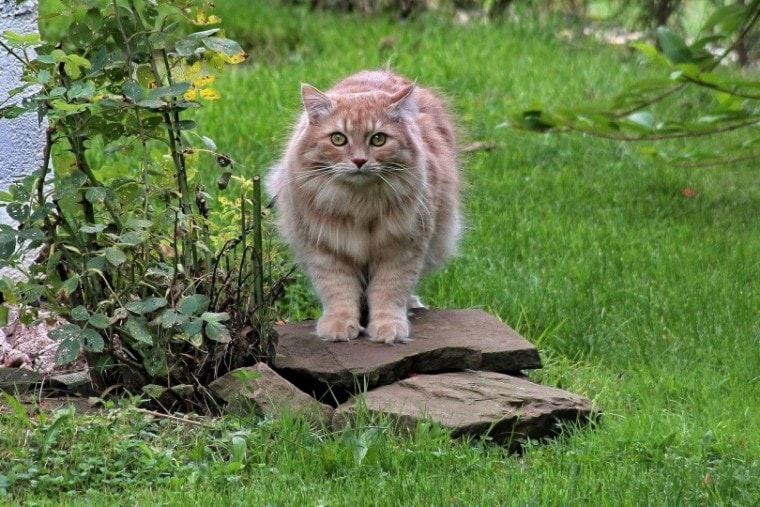
Click Below to Skip Ahead
The Siberian Cat is a striking feline with a thick coat and stocky body. The breed is ancient, with a history that goes back over 1,000 years. As their name implies, they hail from Russia and are even the national cat of the country. While they’ve been around a long time, the cat took a while to move out of their native land. Both the Cat Fanciers Association and The International Cat Association have now recognized the breed.
Breed Overview
Height
Up to 13 inches
Weight
15 – 25 pounds
Lifespan
12 – 15 years
Colors
Black, blue, silver, fawn, tabby
Suitable for
Active families looking for a playful cat
Temperament
Agile, loyal, affectionate, curious
The Siberian Cat is an interesting animal. They’re not vocal like some other breeds, such as Siamese. They are also an intelligent feline that loves to play. You may find that they’ve more dog-like than other cats. They are curious and adventuresome. Even though the Siberian Cat is a larger animal, they have no problem jumping on bookshelves or exploring their world.
Siberian Cat Characteristics
Siberian Kittens
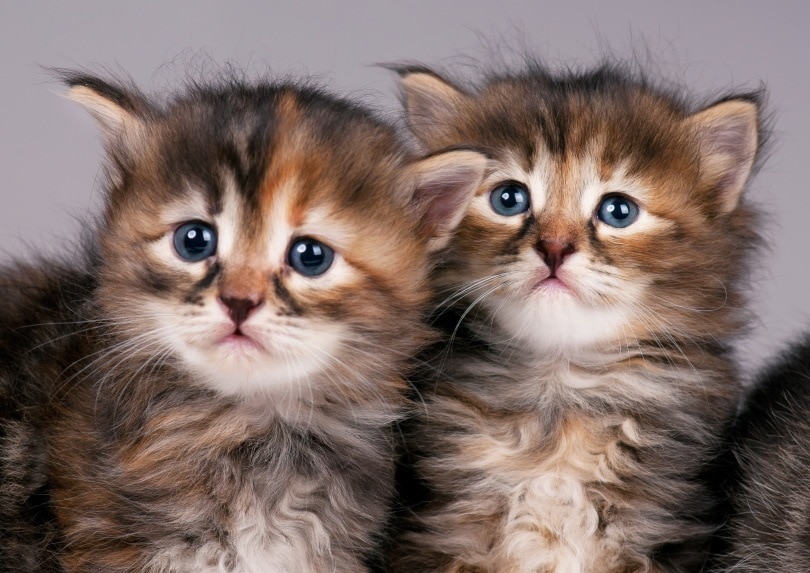
We always recommend researching a breed before you buy. It can save a great deal of hassle in the long run. This is no exception with the Siberian Cat. They’re surprisingly adaptable, given their history and isolation from the rest of the world. You’ll find that this pet is quite affectionate and willing to show it. Don’t be surprised if you have a shadow following you from room to room.
The Siberian Cat could easily have been the inspiration for the association between curiosity and felines. That describes this breed to a tee. It also means that you may have a challenge on your hands if you want to keep some places in your home off-limits to your pet. Their keen intelligence gives this cat excellent problem-solving skills.
Temperament & Intelligence of the Siberian Cat

The Siberian Cat defines lovable on so many fronts. Their cute face invites you to cuddle with them, which they will thoroughly enjoy. This kitty has a great deal of energy, which is something to keep in mind if you keep them strictly indoors. This breed is intelligent, so you’ll need to provide plenty of mental stimulation to keep them out of mischief. If you don’t give them any toys, they’ll find their own.
We suggest rotating your pet’s toys if they show signs of boredom. Even putting a cat post in a new spot will be enough to get your kitty interested in it again. Interactive toys are an excellent choice for the Siberian cat. Bonding time with you is also essential to keep your pet happy. You’ll likely find that your cat will learn your schedule and wait patiently for you to come home from work.
Are These Cats Good for Families? 👪
The Siberian Cat makes a great family pet. They are adaptable to handling a changing schedule. They will also enjoy the activity and interaction time with all members of your household. The cat is larger, so they’ll do fine with children. We recommend teaching the younger ones how to handle the kitty properly, though. This breed is sometimes cautious around strangers, making continued socialization essential.
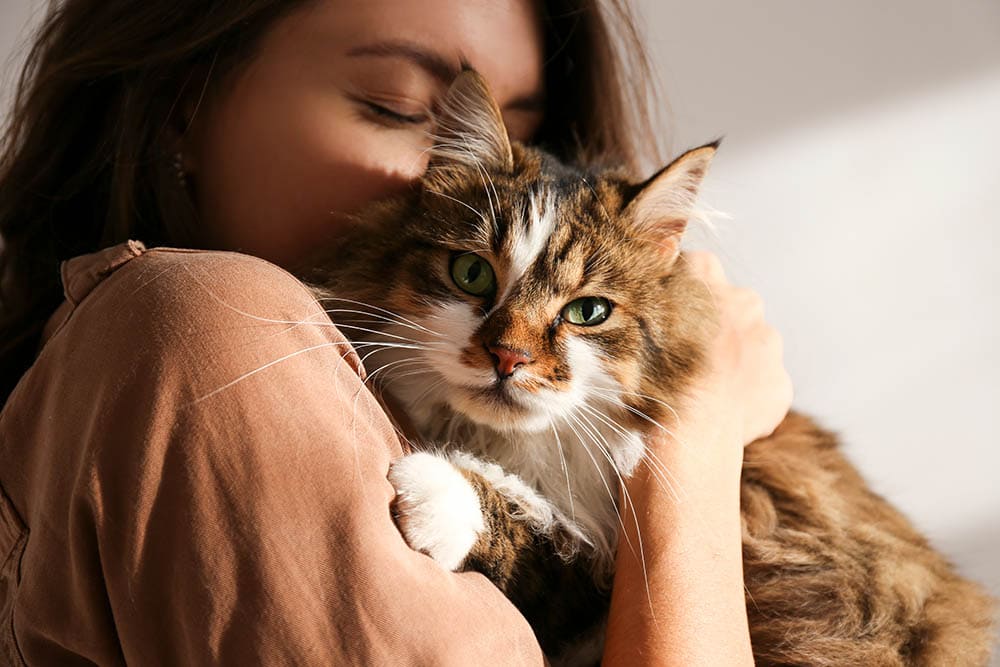
Does This Breed Get Along With Other Pets?
Perhaps because of their larger size, the Siberian Cat will get along with other pets, including dogs. We suggest supervising their time together, especially in the beginning, to make sure that there aren’t any conflicts. It’s a different story with other pets. The Siberian’s early history included hunting rodents. They’re probably not the best fit for a home that includes small animals.
Things to Know When Owning a Siberian Cat
Let’s go over the everyday things that you must consider when owning a Siberian Cat. We cover diet and health concerns and everything in between! The most important thing to understand about this breed is their need for attention. They’re not a pet to leave at home for hours on end. They want and need human companionship.
Food & Diet Requirements 
The Siberian Cat is a larger breed. You should plan on feeding your kitten three to four times a day, depending on their age. This breed is intelligent and will learn the routine quickly. We recommend that you pick up your kitty’s food after 30 minutes, especially if you give them a canned diet. The food can spoil quickly and cause digestive upset.
Cats grow rapidly during those first months. That’s why it’s imperative to ensure that your pet is getting adequate nutrition. Once your kitten reaches 6 months, you can transition them to a twice-a-day feeding schedule. Make sure there is always fresh water available.
Some pets pick up an annoying habit that you must stop in its tracks if your Siberian Cat starts it. If your kitty wakes you up early to feed them, don’t give to their begging. An intelligent feline will soon learn that it’s an effective way to get fed. As hard as it may seem, we suggest that you ignore them. They’ll figure out eventually that the ruse isn’t going to work.
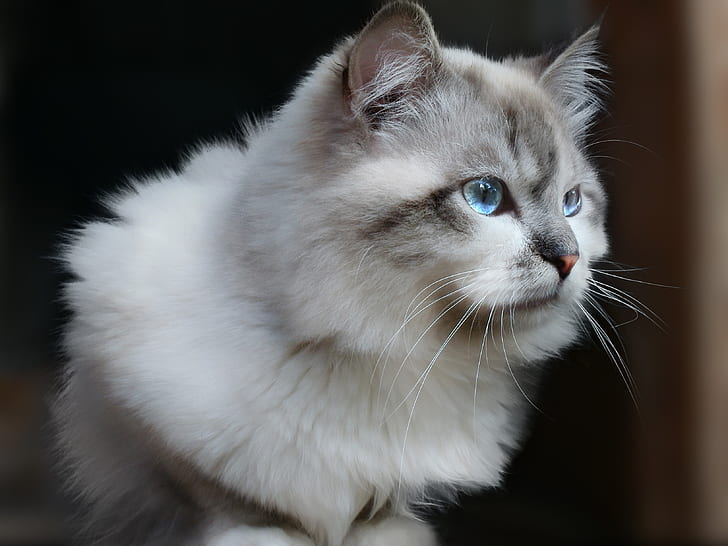
Exercise 🐈
The Siberian Cat is an active animal. The chances are that they’ll find a way to entertain themselves. However, toys are an essential part of play and will help ensure that your pet gets daily exercise. Teaser wands can be an excellent way to get your kitty moving and share bonding time with you. We also suggest monitoring your cat’s body condition if they’re not playing enough to keep their weight in check.
Training 🧶
You might be able to teach your Siberian Cat a few tricks because of their high intelligence. Probably your biggest training challenges will involve keeping your pet from scratching your furniture. Remember that scratching is instinctive for felines. Scolding your pet for doing what comes naturally to them won’t fix the problem. You just won’t see it when it happens.
A better and more effective plan is to offer a substitute instead. If your cat starts to scratch, give them a toy or move them to a scratch post. You’ll find that a sprinkling of catnip is a powerful attraction to appropriate behavior.
Grooming ✂️
The Siberian Cat has a thick and luxurious coat. Surprisingly, the pet doesn’t shed as much as you might expect. However, daily brushing is an effective way to keep it under control. It’s also bonding time. We suggest getting your kitty used to having their paws handled as a kitten. You’ll find that clipping their nails will be much easier if you start it young.
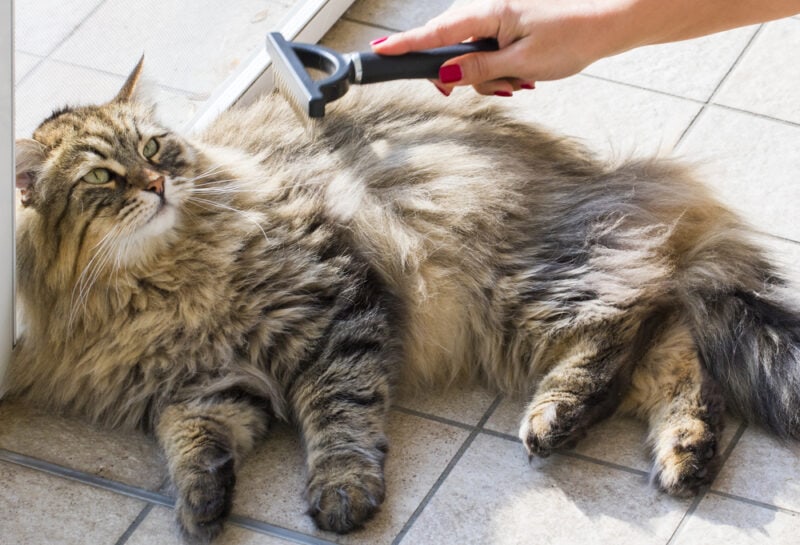
Health and Conditions 🏥
Reputable sellers will screen their litters for any congenital issues before selling the kittens. Some breeds have genetic conditions that occur frequently. For the Siberian Cat, it is a form of heart disease called hypertrophic cardiomyopathy. Fortunately, a test exists to detect it. We recommend only getting a kitten if the breeder has screened both parents.
 Male vs. Female
Male vs. Female
Male and female Siberian Cats make delightful pets, no matter which one you choose. Both are affectionate and loyal companions. The primary difference is size. Whereas a female can get up to 15 pounds, males may tip the scales at 25 pounds. If this is a problem, then you can opt for the smaller sex.
The other concern is the cost of spaying or neutering. The former is the more expensive and invasive of the two surgeries. The recovery time is also longer. We suggest discussing your options with your vet regarding the timing of this procedure.
3 Little-Known Facts About the Siberian Cat
1. Although an Ancient Breed, They Took a Long Time to Cross the Pond.
The Siberian Cat is an ancient breed. They came to the United Kingdom in the mid-1800s. It wasn’t until 1990 that the first Siberian cats made it to the United States.
2. The Siberian Cat Is Appropriately Named.
You have only to look at the dense coat of the Siberian Cat to know that they’re well-insulated against the cold. The breed is quite tolerant of conditions that most pets wouldn’t like. You’ll notice that their coat will even get thicker during the colder months of the year, even if they’re a homebody.
3. The Siberian Cat Differs From Other Felines in One Unusual Way.
Most cats flee from water. That’s not the case with the Siberian Cat. Growing up on the taiga and forests of Russia meant that they had frequent contact with streams and ponds. Instead of running from water, this feline is likely to enjoy splashing around in it.
Conclusion
The Siberian Cat is something of an anomaly. For a breed that gets as big as they do, you might think that they would be less active or playful. Not a chance with this cutie! It’s almost like owning a kitten that never grows up and becomes a sedentary adult. This kitten will bring a great deal of joy into the life of anyone who invites them into their home. If one thing is for sure, this kitty will make life interesting from day one.
See Also:
Featured Image Credit: Michael Hüttl, Pixabay


 Male vs. Female
Male vs. Female



